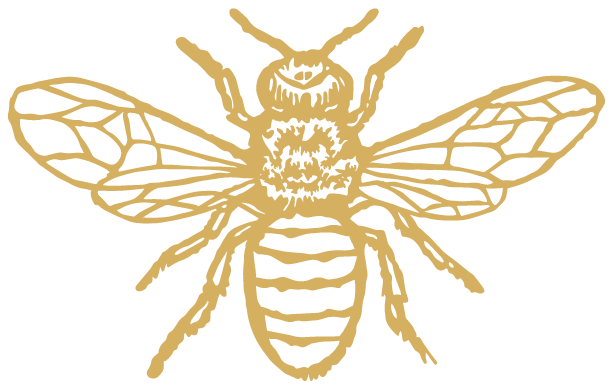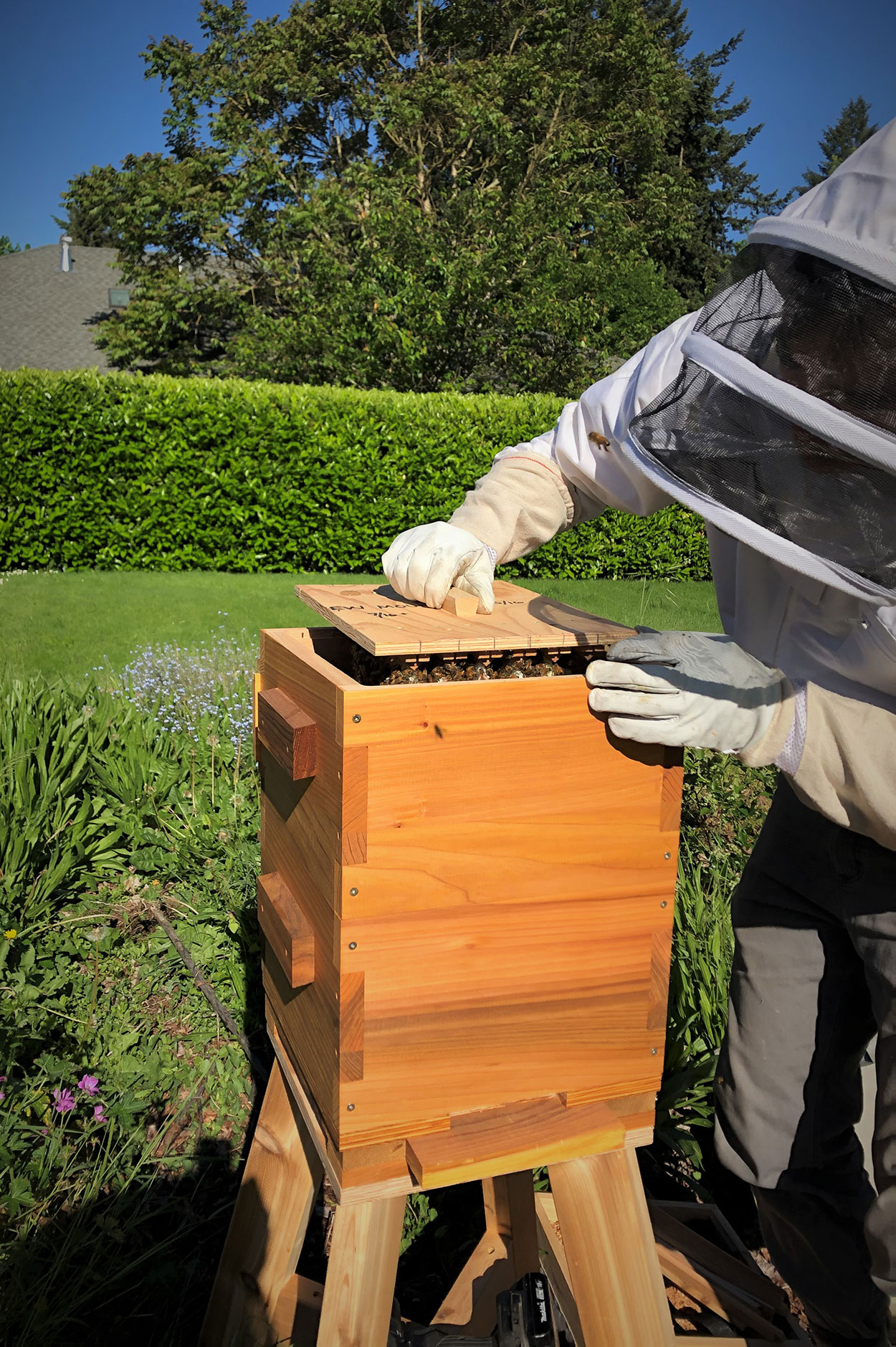HIVE SETUP
Choosing a hive location should prioritize the needs of the bees, safety of the home and neighbors, and ease of access.
Consider: THE BEES & THE HIVE
Honey bees prefer a hive located in an area protected from wind and with good sun exposure, especially to morning sun. I tend to face the hive landing board towards the east-southeast to warm the entrance and the bees early in the day. Bees also need at least six feet of clear space in front of the hive and avoid areas with large obstructions or heavy foot traffic. It’s best to avoid damp locations or areas with standing water in front of the hive. In the wild, bees tend to choose hive locations 12’-18’ above the ground, however that is impractical for most locations and placing a hive 18”-24” above the ground on a level sturdy base will help protect the colony from ground critters and limit moisture from the layer of damp air near the ground surface. If you live in an area with bears, just keep in mind that bears are clever animals and are highly motivated by honey. I recommend using a strap around the entire hive for added security (include whatever the hive is sitting on, if possible, and feed the strap over the wooden part of the roof but not over the metal roof). Bees also need a reliable water source within 50’ of the hive that has gently sloping sides and rocks or other objects to land on so they can climb out of the water. In residential areas or if there’s a pool nearby then it’s better to have a water source within 15’ of the hive.
Consider: THE HUMANS
A hive should be located so that the beekeeper (or the bee observers) can easily access all sides of the hive. Make sure it’s easy to access the viewing windows and removable bottom board, and it is critical for the beekeeper to have sufficient space to work the hive. It’s also important to consider your neighbors and to be upfront about your hive(s), especially in residential areas.
Communicating with your neighbors about the benefits of having a beehive nearby (such as better pollination of fruits and vegetables), considering their concerns and answering questions, and sharing honey after a harvest will prevent most issues.



Consider: Local and State Regulations
Make sure you are compliant with the state and/or local laws that govern beekeeping and that you have permits, if required. In Eugene, most residential properties are limited to three hives, placed at least five feet from property lines, facing towards the center of the property, and with a water source within 15’ of the hive.
Also, the state of Oregon requires beekeepers with five or more hives to register with the Oregon Department of Agriculture. If you are unclear about any restrictions on beekeeping in your area, check in with the local beekeeping association or county extension service.
